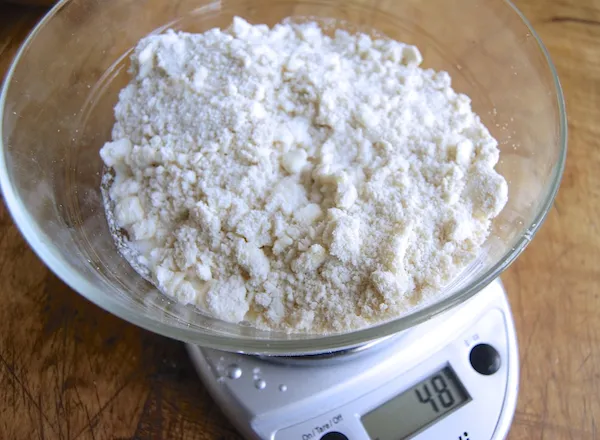
How to Calculate Baker's Percentages


Calculating Baker's Percentages
I would love more FREE recipes and tips straight to my IN BOX!
Baker's percentage is simply a way to indicate the proportion of a recipe's ingredients relative to the total flour used in the recipe. For example, if the total flour used in a recipe is 500 grams and the amount of water used is 350 grams, then the Baker's Percentage of water is 70% (350 is 70% of 500). In this example you can also say the hydration level of the dough is 70%. If the total amount of salt in this example recipe is 10 grams, the Baker's Percentage of salt is 2%. Using Baker's Percentages allows you to easily scale a recipe (adjust the size and hydration) to suit your needs. If a loaf of bread using 500 grams of flour is bigger or smaller than you want, you can reduce or increase the amount of all the ingredients, but keep the proportions the same in relation to the amount of flour you want to use in your recipe.
Understanding hydration comes in hand when you want to change the ratios of whole grain to white flour in a recipe. Whole grain flours absorb more water so they need a higher hydration of say 90%. White flour absorbs less water so a hydration in the 72-75% range would give you a nice moist loaf of bread. If you have an even mix of whole wheat to white flour, a hydration level of 85% is ideal.
The amount of starter in your recipe does change hydration. A 100% hydration starter means you feed it equal grams of flour and water.
So 100g starter = 50g flour and 50g water
Your overall hydration of your 500g flour, 350g water and 100g starter loaf is then:
Hydration = 400/550 = 72.7% hydration
To help you bake awesome sourdough bread using baker's percentages, you can find an online calculator at: https://observablehq.com/@mourner/sourdough-calculator
Share with Your Friends!
Feel free to share this newsletter with your friends and family, and invite them to join our Facebook group Sourdough Living and subscribe to our newsletter at www.sourdoughliving.com.
